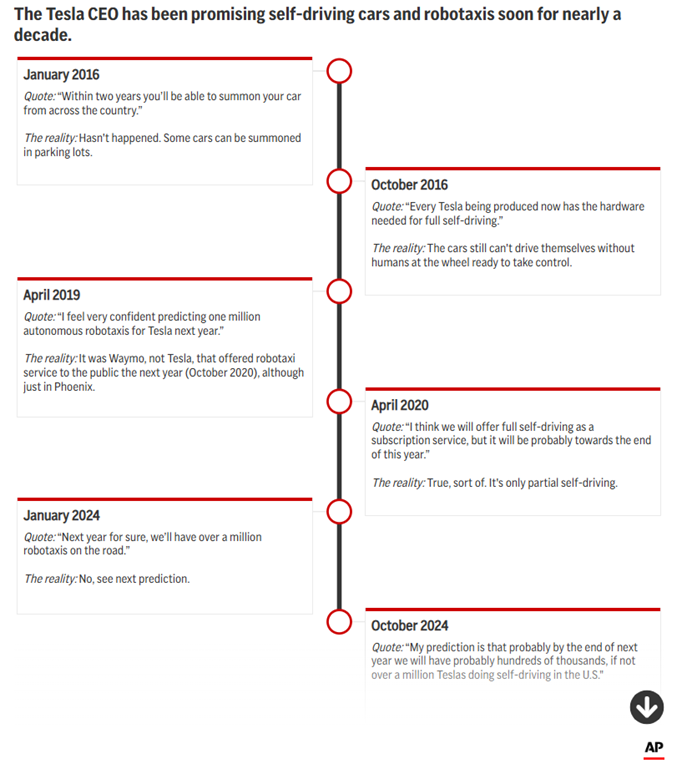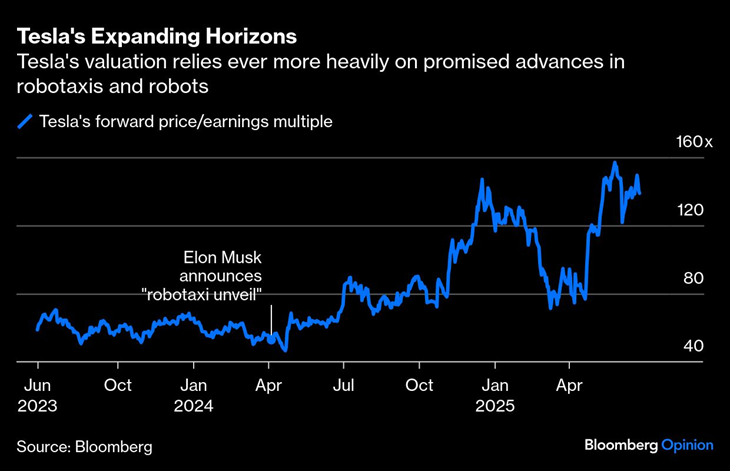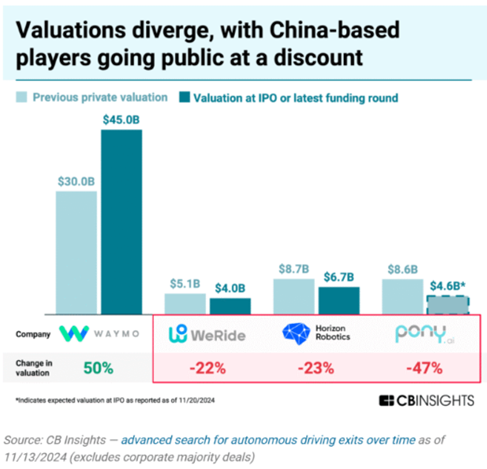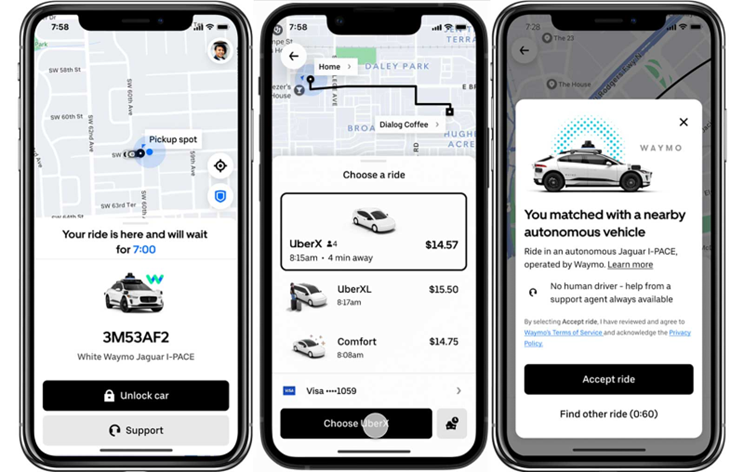Parallel49 equity sells CPI Card Group (PMTS) shares for $28.7 million
Tesla (NASDAQ:TSLA) robotaxis are now common in Austin, but frequent mishaps show the tech still lags behind Alphabet’s (NASDAQ:GOOGL) safer, fully driverless Waymo, already operating in multiple US cities.
Introduction
After years of bold promises and missed deadlines, Tesla began commercial autonomous ride-hailing this June with 10–20 Model Ys on tightly controlled routes in South Austin, Texas.
This launch, though limited in scope, still represents an inflection point in the global robotaxi competition. Analysts project that the autonomous ride-hailing market could generate hundreds of billions in revenue within the next decade. Yet Tesla enters this arena as a challenger, not a leader. While CEO Elon Musk was making repeated bold future promises, competitors like Waymo were steadily building operational scale and winning regulatory approval.
Tesla’s Promise Meets (a Small) Reality
Elon Musk’s robotaxi promises stretch back to 2019, when he confidently predicted driverless Tesla vehicles would hit the streets "next year." That prediction, like many of his timelines, proved overly optimistic. Year after year, the launch was delayed until Tesla finally unveiled its first robotaxi prototypes in October 2024.
This set the stage for a more concrete move. On 22 June 2025, the company rolled out its first robotaxi service in Austin, Texas. The rollout is starting quite modestly, with only 10 to 12 Model Ys in operation, confined to a tightly geofenced area.
Each ride is supervised by a Tesla employee in the passenger seat, and trips are currently limited to daylight hours and favourable weather conditions. The service runs on Tesla’s Full Self-Driving (FSD) software, designed to operate without driver input. Early rides were offered to influencers and loyal Tesla fans.

Source: AP
Tesla’s approach to self-driving sets it apart from rivals like Waymo and Cruise, which rely on expensive lidar and radar systems. Instead, Tesla is committed to a camera-only setup powered by artificial intelligence. If successful, this could offer major cost advantages and allow for rapid scaling across its existing fleet. Rides are currently priced at a flat USD $4.20.
So far, feedback has been mixed, as some early users praised the experience, while others encountered a different driverless experience. Videos posted online showed vehicles entering the wrong lane, braking abruptly without cause, and even stopping in the middle of intersections. This drew the attention of the National Highway Traffic Safety Administration (NHTSA), which opened an investigation into the service and formally requested information from Tesla regarding these incidents.
Despite the cautious rollout, Tesla’s long-term vision is far more ambitious. Elon Musk has hinted that the company may soon reduce its reliance on in-car safety supervisors, aiming for a 3:1 ratio of robotaxis to human supervisors, a potential tipping point for commercial viability. He noted that such a shift could happen within months, as Tesla continues to refine its AI with every mile driven.
Ultimately, Tesla sees a future where existing vehicle owners could add their cars to the robotaxi fleet via a simple over-the-air update, creating an "Airbnb model for cars." As Musk put it earlier this year, “Instead of having your car sit in the parking lot, your car could be earning money.
You will be able to add or subtract your car to the fleet.” In theory, this would allow the network to scale rapidly, leveraging millions of Teslas already on the road.
Investors are keeping a close eye on Tesla’s progress with its robotaxi rollout as it increasingly becomes a key part of the company’s growth story. The company has faced pressure on multiple fronts: boycotts tied to Elon Musk’s political activity have weighed on sales, competition from new electric vehicle (EV) players is growing, a public clash with President Trump, whose administration oversees auto regulation, and the passing of the big, beautiful bill that ends tax breaks for EV.
With sales under pressure, the future of the company is increasingly tied to the success of its self-driving technology. Musk has promised to expand the service to additional US cities later this year and still insists that “millions of Teslas” will operate “fully autonomously” by the second half of 2026.
He believes the robotaxi business could dominate Tesla’s revenue model within five years, potentially generating close to $1 trillion. So far, Tesla’s stock is down more than 22% year-to-date and more than $400 billion in valuation. The company is expected to release its second-quarter delivery and earnings results in the coming weeks.
Source: Bloomberg
Assessing Competitive Dynamics
While Tesla continues to generate headlines with ambitious projections, Waymo has quietly built the most advanced robotaxi operation in the US.
Today, the Alphabet-owned company runs fully autonomous vehicles (AV) without safety drivers in Phoenix, San Francisco, Los Angeles, Atlanta and Austin, with expansions planned for Washington D.C., Miami, and New York City. Waymo’s vehicles use a combination of lidar, radar, and cameras to navigate complex environments, a sensor fusion model that is more expensive than Tesla’s vision-only system, but one that has delivered consistent, regulator-approved performance.
The numbers speak volumes—Waymo is approaching its 20 million rides and completed its 10 millionth paid ride. Bank of America estimates Waymo generated between $50-75 million in revenue during 2024 and incurred up to $1.5 billion in operational losses. Analysts note that Waymo’s combination of technical capabilities, regulatory approvals, and strategic partnerships, such as its collaboration with Uber (NYSE:UBER), could have a significant impact on Alphabet’s long-term positioning in the autonomous vehicle space and could eventually justify a separate public listing.
In addition, Amazon (NASDAQ:AMZN) entered the robotaxi market when it acquired Zoox in 2020. Zoox designs purpose-built autonomous vehicles.
These vehicles feature no steering wheels or pedals, with passengers sitting face-to-face in a bidirectional design optimised for urban mobility. Amazon-backed Zoox recently opened its first robotaxi serial production facility in Hayward, California, spanning 220,000 square feet and capable of producing 10,000 vehicles annually at full scale.
Currently testing in Las Vegas, San Francisco, and Seattle, Zoox’s vehicles can travel up to 75 mph and are designed for dense urban environments where traditional car designs prove cumbersome.
China’s more permissive approach enabled rapid scaling for AV companies. Baidu (NASDAQ:BIDU)’s Apollo Go emerged as Waymo’s closest global competitor, operating in over 11 cities and completing millions of rides quarterly. The company’s latest robotaxis cost significantly less to produce than Western counterparts, enabling rapid fleet expansion across Chinese megacities.
Pony.ai, now publicly traded on Nasdaq, was named the top robotaxi stock by Goldman Sachs. The company gained regulatory approval for fully driverless operations in Beijing and Guangzhou and recently launched its Gen-7 robotaxi in Shenzhen through a partnership with Xihu Group, aiming to deploy over 1,000 units there.
A separate partnership with Tencent (HK:0700) has boosted its commercial viability and investor confidence, with profitability projected by 2029. Meanwhile, WeRide—China’s first publicly listed robotaxi firm (Nasdaq: WRD)—secured a $100 million investment from Uber to expand into 15 more cities. With backing from Nvidia (NASDAQ:NVDA) and Geely, WeRide is pursuing a broad range of autonomous applications beyond passenger transport, and analysts project profitability by 2027 despite heavy R&D spending.

Source: CB Insights
The European landscape presents a starkly different picture, with regulatory frameworks favouring gradual, safety-first approaches over rapid deployment. Companies like Mobileye, the Intel-owned pioneer in driver assistance systems, are testing robotaxis in Munich and Paris, while French startup Navya focuses on low-speed autonomous shuttles for specific routes.
Baidu reportedly plans to launch Apollo Go in Switzerland and Turkey later this year while traditional automaker Volkswagen is taking a European approach with their retro-styled ID. Buzz AD electric van. Familiar aesthetics are meant to ease consumer acceptance of unfamiliar technology.
The Buzz electric van operates at SAE Level 4 autonomy, driving itself in specific areas without human intervention using 27 sensors and remote monitoring systems. MOIA, Volkswagen (ETR:VOWG_p)’s mobility subsidiary, will launch the service in Germany first, then expand across Europe and into the US by 2026.
Volkswagen’s approach differs from Silicon Valley’s disruptive mindset: company executives don’t view robotaxis as a "winner take all market" and prefer to help existing transportation providers rather than replace them. This strategy reflects European market realities: the continent’s dense urban areas, strong public transportation systems, and environmental regulations have created a more cautious ecosystem where full autonomy remains largely confined to controlled testing environments.
Intermediaries
Ride-hailing companies are positioning themselves as intermediaries in the robotaxi ecosystem. Companies like Uber and Lyft (NASDAQ:LYFT) are betting on partnerships with robotaxi operators to maintain their market dominance.
Uber CEO Dara Khosrowshahi revealed that Elon Musk was not open to making Tesla’s robotaxis available on the ride-sharing platform, contrasting with Uber’s collaborative approach elsewhere. The company has built partnerships with Waymo across multiple cities, recently expanding to Atlanta after successful launches in Phoenix and Austin.
Uber is positioning itself as a "platform play," connecting riders with multiple autonomous vehicle operators. Beyond Waymo, Uber partnered with May Mobility to deploy thousands of self-driving vehicles starting with Arlington, Texas, by late 2025. The company has also announced partnerships with WeRide, Momenta, and Pony.ai.

Source: Uber
Meanwhile, rival ride-hailer Lyft rolled out three new partners who may help deploy self-driving vehicles on the Lyft network this year. The company’s partnerships include Mobileye for fully autonomous robotaxis "as soon as 2026" in Dallas, May Mobility for Atlanta operations, and Nexar for data-sharing agreements that help train autonomous driving systems.
Early market reactions suggest investors view the partnership model as a winning strategy, one that allows companies like Uber to benefit from the robotaxi boom without bearing the full technological and regulatory risks of developing autonomous vehicles themselves.
While Tesla’s stock is down 23% YTD, Uber shares have gained 53% as investors embraced the company’s expanding autonomous vehicle strategy. The collaborative approach also makes operational sense. Waymo and other AV companies gain access to established customer bases and proven dispatch technology without having to build a ride-hailing platform from scratch, meanwhile ride-hailing companies gain access to proven autonomous technology without the massive capital investments required for in-house development.
Conclusion
Tesla’s Austin debut highlights the gap between robotaxi ambitions and street-level reality. Trailing pioneers like Waymo in scale and consistency, Tesla nonetheless boasts a loyal customer base that could speed adoption, provided it can resolve the technical and safety challenges. In the end, the race won’t be decided by technology alone, but by each player’s ability to marry innovation with reliable operations, solid partnerships, and regulatory approval.
